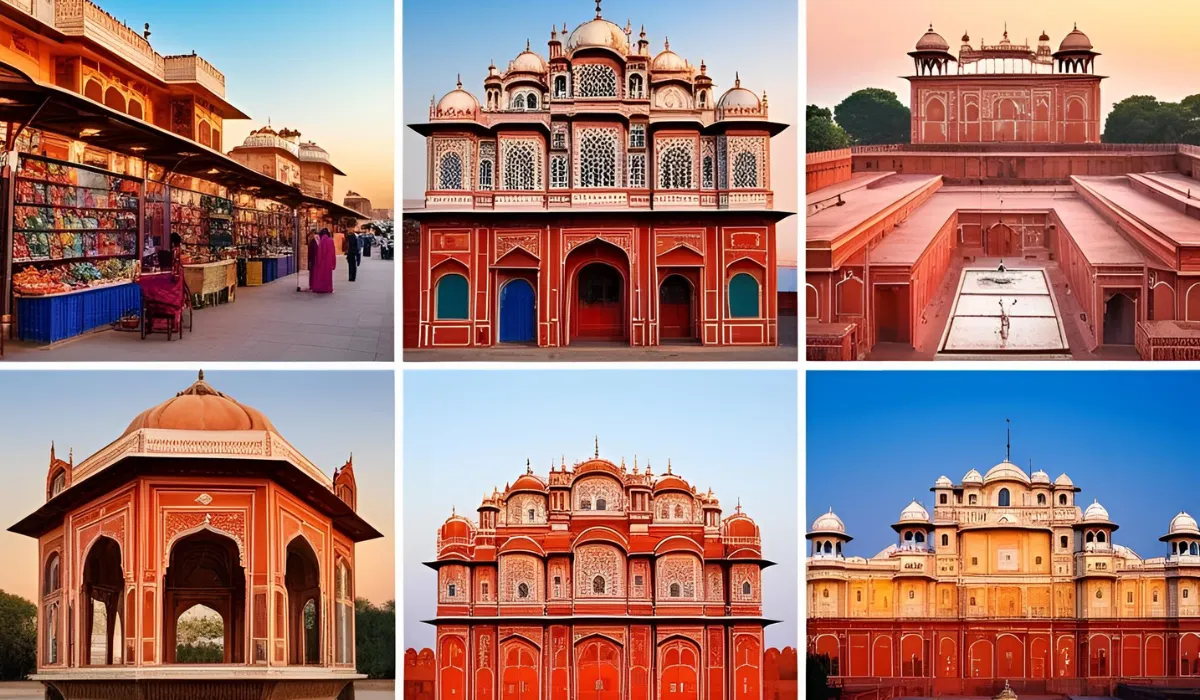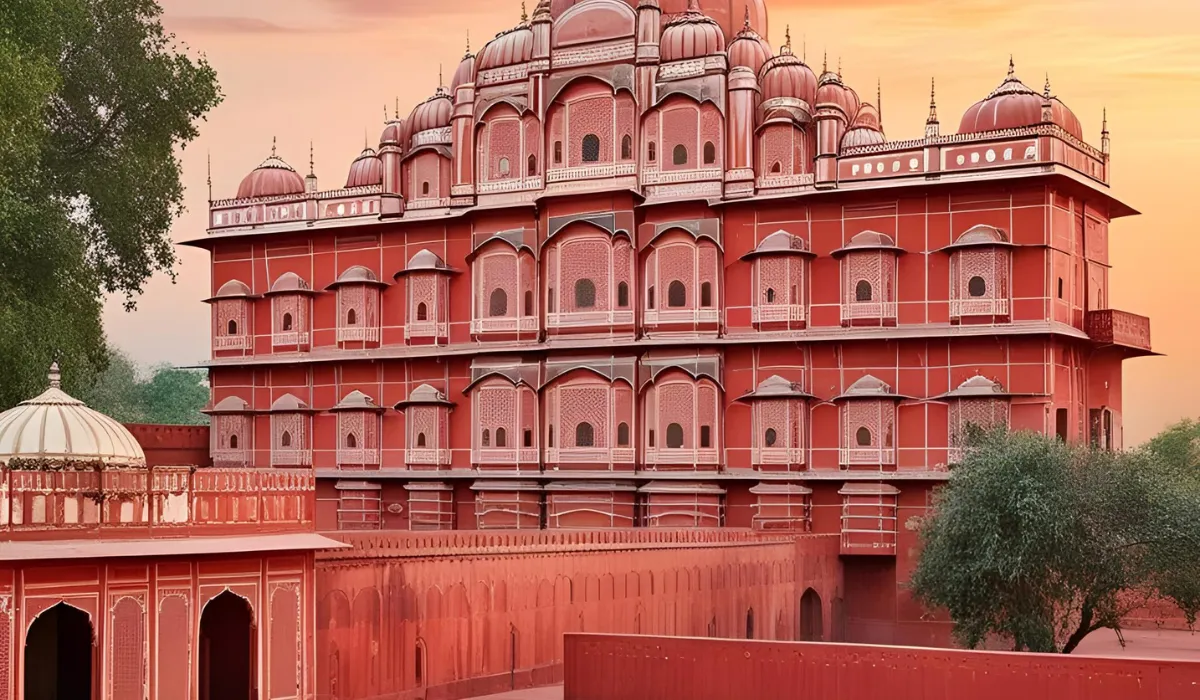20 Spectacular Places to Visit in Jaipur: Your Ultimate Guide to the Pink City’s Treasures
Step into Jaipur, where every corner tells a story etched in pink sandstone and marble. Known as India’s Pink City, this royal capital of Rajasthan dazzles visitors with its perfect blend of centuries-old architecture and vibrant modern culture. Whether you’re a first-time traveler or a history enthusiast, you’ll find some of the best places to visit in Jaipur showcasing its grandeur.
From the world’s largest stone sundial to a palace with nearly a thousand windows, the city is home to top tourist attractions in Jaipur that reflect the artistic vision of its maharajas. Explore must-visit places in Jaipur, such as the iconic Hawa Mahal, Amer Fort, and the City Palace, each offering a glimpse into the city’s regal past.
Jaipur’s charm goes beyond its historical sites—it’s also famous for bustling markets, vibrant festivals, and a thriving food scene. Whether you’re looking for famous places in Jaipur to capture stunning photographs or hidden gems for a peaceful retreat, this city has something for everyone.
Amber Fort

Located 11 km from Jaipur, Amber Palace stands as a stunning blend of Rajput and Mughal architecture. Built with red sandstone and marble, the fort features the glittering Sheesh Mahal, Diwan-i-Aam, and Diwan-i-Khas.
The best time to visit is from October to February during the morning hours or late afternoon. For photographers, sunrise and sunset offer magical views with golden light washing over the fort’s walls.
City Palace

The City Palace, Jaipur complex showcases the best of Rajasthani heritage with its mix of Rajput and Mughal styles. The Chandra Mahal and Mubarak Mahal house royal artifacts that tell stories of Jaipur’s past.
Visit during winter months (October to February) in the morning to beat the crowds. Take a guided tour to learn about the palace’s rich history and understand the significance of its architectural details.
Hawa Mahal

The iconic Palace of Winds features 953 windows in a striking honeycomb pattern. These small windows allowed royal women to watch street festivities while staying hidden from public view.
For the best photos, head there early morning when sunlight hits the pink sandstone facade. Plan your visit between 9:00 AM to 5:00 PM, but skip the midday rush for a more peaceful experience.
Jantar Mantar

This Jantar Mantar, Jaipur stone-built astronomical observatory houses 19 instruments, including the world’s largest sundial. Each instrument serves a specific purpose, from tracking stars to predicting eclipses.
Morning visits offer cooler temperatures for walking around the complex. Book a guide to understand how these tools worked and their role in ancient astronomy. The best months to visit are October through March when the weather makes outdoor exploration comfortable.
Jal Mahal

Sitting in the middle of Man Sagar Lake, this Jal Mahal catches the eye with its mix of Rajput and Mughal design. Four floors stay underwater while one rises above, creating perfect reflections on the lake’s surface.
Morning light bathes the palace in warm colors, but the best views come at sunset when the sky turns golden. Stop by in the evening to see the palace lights mirror on the calm waters, or take a boat ride for up-close views of this architectural gem.
Nahargarh Fort – Best places to visit in Jaipur

Built in 1734, Nahargarh Fort sits high above Jaipur, giving visitors sweeping views of the Pink City. The fort’s walls, courtyards, and royal apartments tell stories of past rulers and battles.
Visit during November to March when cool breezes make walking through the fort pleasant. Come at sunset to watch the city lights turn on below, and wear good walking shoes – you’ll need them to see all the fort’s corners. The fort opens daily and offers both day and night tours.
Albert Hall Museum
As Rajasthan’s oldest museum, Albert Hall houses an impressive mix of pottery, jewelry, and art from different periods. The star attraction is its Egyptian mummy, drawing visitors from around the world. Stop by during morning hours (8 AM – 10 AM) to skip the crowds. Set aside 1-2 hours to take in the collections, and pick up an audio guide to learn about the artifacts’ stories. Winter months from October to March offer the best conditions for walking through the halls.
Galtaji Temple
This ancient temple complex sits in a natural setting with sacred springs and striking architecture. Local monkey families add character to the peaceful grounds. Morning visits offer quiet moments for prayer and photography. Bring small offerings for temple rituals, but keep food and belongings secure from curious monkeys. The temple welcomes visitors daily, with winter mornings providing the most serene experience for spiritual reflection and wildlife watching.
Birla Mandir
The white marble Birla Mandir stands out with its intricate carvings dedicated to Lord Vishnu and Goddess Lakshmi. The temple’s clean lines and modern design create a calm atmosphere for prayer and reflection. Visit during evening aarti to experience spiritual energy at its peak, when the marble glows under soft lighting. The temple welcomes visitors daily, with October to March offering pleasant temperatures for exploring the grounds.
Sisodia Rani Garden
This Mughal-style garden, built by Maharaja Sawai Jai Singh II, offers a peaceful break from city life. The terraced gardens feature flowing fountains, painted walls, and quiet walking paths. Morning visits let you enjoy the fresh air and blooming flowers without crowds. Stop by in the early hours or late afternoon to skip the heat. The garden makes an ideal spot for family picnics and romantic walks during the cooler months of October to March.
Jaigarh Fort
The military stronghold of Jaigarh Fort stands guard above Jaipur, famous for housing Jaivana – the world’s largest cannon on wheels. The fort’s thick walls, armory, and weapon displays show off its battle-ready past. Visit during October to March when temperatures stay mild. Plan your trip alongside Amber Palace since they sit close together. Get a guide to hear stories about the fort’s defense tactics and hidden passages that protected the royal family during conflicts.
Panna Meena ka Kund
This 16th-century stepwell stands out with its perfect symmetrical design and eight-story structure. The crisscrossing stairs create patterns that catch the morning light, making it a favorite spot for photographers. Visit early in the day before the heat sets in, and take time to observe the intricate stonework. During winter months, the soft light and cool air make the stepwell’s architecture pop in photos.
Elefantastic
This ethical elephant sanctuary puts animal welfare first while letting visitors connect with these gentle giants. Activities include feeding, bathing, and learning about elephant care from expert handlers. Book your visit ahead – spots fill up fast. Wear comfortable clothes that can get wet and dirty during activities. The sanctuary works best during October to February when mild temperatures make outdoor time with the elephants more pleasant.
Bapu Bazaar
One of Jaipur’s busiest shopping spots, Bapu Bazaar buzzes with stalls selling traditional textiles, Rajasthani juttis, and local handicrafts. The market streets fill with colorful displays of bandhani dupattas, block-printed fabrics, and traditional jewelry. Head there in the morning hours when vendors are fresh and ready to negotiate. Keep cash handy, start offers at 40-50% of the asking price, and remember – friendly bargaining is part of the experience. The best shopping happens from October to March when cooler temperatures make market walks more comfortable.
Johri Bazaar
The heart of Jaipur’s jewelry trade, Johri Bazaar sparkles with shops selling precious gems, traditional kundan work, and Rajasthani attire. Narrow lanes fill with the sounds of artisans crafting jewelry and merchants displaying their finest pieces. Stop by in the early evening when the market comes alive with bright lights and busy shoppers. Bring cash, as most sellers prefer it, and start your bargaining at half the quoted price. The winter season offers the most pleasant shopping weather.
Patrika Gate
This colorful entrance to Jawahar Circle Garden stands as Jaipur’s most photographed spot. The gate’s walls tell stories through bright paintings of Rajasthani culture, traditions, and history. Morning light brings out the rich colors of its murals, while sunset casts a warm glow perfect for photos. Visit between October and February when clear skies make the artwork pop. Come early or late in the day to skip crowds and catch the best light for pictures.
Gatore Ki Chhatriyan
The royal cremation grounds of Gatore Ki Chhatriyan showcase marble cenotaphs honoring Jaipur’s former rulers. Each structure displays detailed carvings and architectural patterns that mark different royal families. Visit in the morning hours when soft light highlights the white marble work. Local guides can explain the meaning behind each cenotaph’s design and share stories of the maharajas they commemorate. The site stays open daily, with October to March offering the best weather for exploring these peaceful grounds.
Jawahar Circle Garden
Asia’s largest circular park fills with bright flowers, walking paths, and play areas. Kids love the musical fountain shows while adults enjoy the quiet jogging tracks and garden spots. The park comes alive in the evening when families gather to watch water displays set to music. Stop by during winter months, especially at sunset, when cool breezes make outdoor time pleasant. The garden stays open daily with fountains running on schedule.
Raj Mandir Cinema
This famous movie theatre stands out with its pink walls and art deco style, making it a must-visit spot in Jaipur. Its grand interiors feature crystal chandeliers, winding staircases, and plush seating that takes viewers back to cinema’s golden age. For the best experience, book tickets early and arrive 30 minutes before showtime to take in the building’s charm. Evening shows during winter months offer a cozy atmosphere with lively local crowds.
Chand Baori Stepwell
Near Jaipur in Abhaneri village sits one of India’s deepest and most striking stepwells. Built in the 8th century, Chand Baori features 3,500 narrow steps arranged in perfect symmetry, descending 13 stories deep. The steps create mesmerizing geometric patterns that change with the light throughout the day. Visit early morning for the best photos when sunlight plays on the ancient stone steps. October through March offers comfortable weather for climbing around this architectural wonder.
Experience the Magic of the Pink City
Jaipur’s magnificent forts, palaces, and bazaars paint a vivid picture of Rajasthan’s royal heritage, while modern attractions like Elefantastic and Raj Mandir Cinema bridge the gap between tradition and contemporary culture. Each site offers unique perspectives on the city’s rich history and dynamic present.
Plan your visit between October and March to experience these attractions at their best, when pleasant weather enhances every exploration. From sunrise at Amber Fort to sunset at Nahargarh, Jaipur’s treasures promise memories that will last long after your journey ends.
FAQs
What are the must-visit places in Jaipur?
Some of the must-visit places in Jaipur include Amer Fort, City Palace, Hawa Mahal, Jantar Mantar, Nahargarh Fort, and Albert Hall Museum.
Which are the best places to visit in Jaipur for first-time travelers?
First-time travelers should explore top tourist attractions in Jaipur, such as Jal Mahal, Amber Fort, Hawa Mahal, and the Pink City’s vibrant markets.
What are the famous places in Jaipur for photography?
Jaipur offers plenty of Instagrammable locations, including Hawa Mahal, Panna Meena Ka Kund, Patrika Gate, and City Palace.


